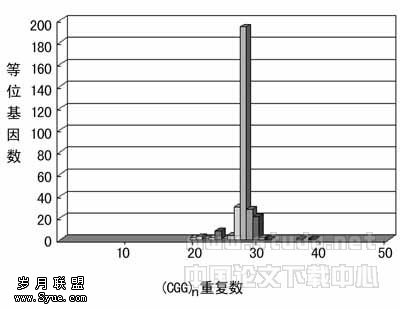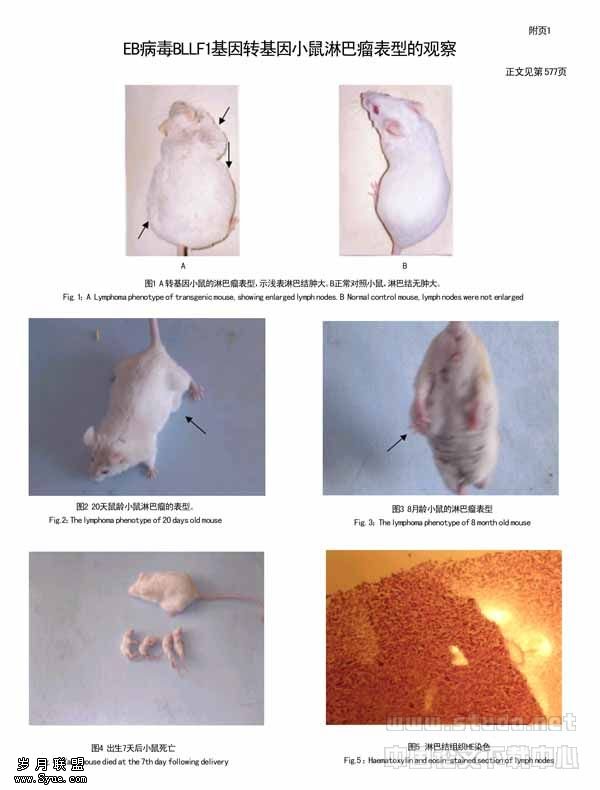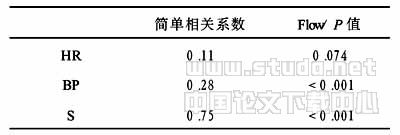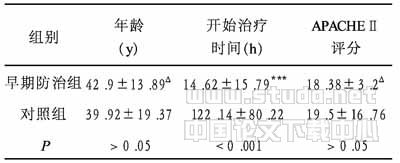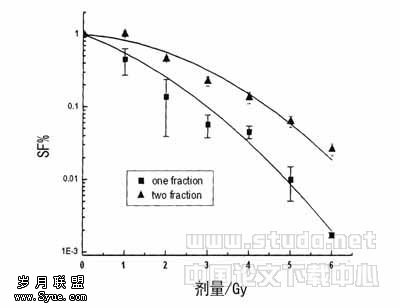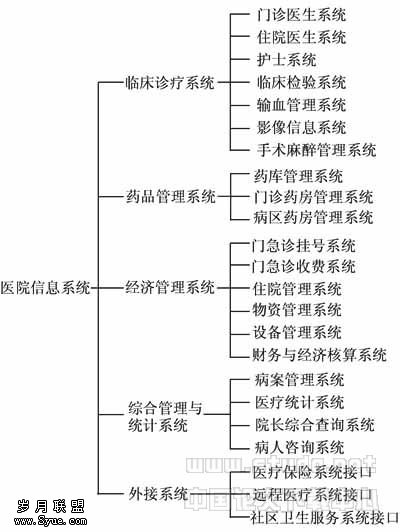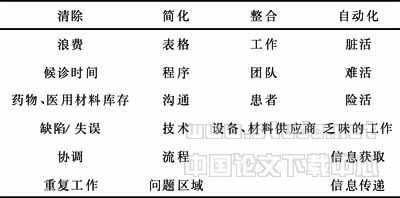Clinical features of Graves ophthalmopathy in Iran
作者:Ali Sadeghi Tari , Mohammad Taher Rajabi, Khalil Hamzedust, Seyed Ziaeddin Tabatabaie, Abolfazl Kasai
Abstract AIM: To determine the clinical characteristics of a prospective study of patients with Graves' ophthalmopathy.METHODS: We reviewed clinical manifestations, and medical records of 103 patients in whom Graves' ophthalmopathy was diagnosed between 2003 and 2005. RESULTS: Among 103 patients with Graves' ophthalmopathy, 48 (46.6%) male and 55 (53.3%) female (F: M=1.1), with mean age of 45 (range; 18-73) years, 95 (92.2%) patients had Graves' hyperthyroidism, 3 (2.9%) had primary hypothyroidism, and 5 (4.8%) were euthyroid. The mean duration of ocular symptoms was 13.2 (range 2-95) months) while the mean duration of dysthyroid symptoms was 39.4 (range 6-180) months. Unilaterality was occurred in 12 patients. Eyelid retraction was present in 90 patients (87%), whereas the approximate frequency of exophthalmos was 77.6% (80 patients); restrictive extraocular myopathy, 29% (30 patients); evidence of extraocular enlargement on CT-scan in 52 patients of 70 patients (74%) that was evaluated, and optic nerve dysfunction, 5.8% (6 patients). 22 (21%) patients had glaucoma associated with Graves' ophthalmopathy that 7 (6.7%) of them were normal-tension glaucoma. CONCLUSION: Eyelid retraction was the most common clinical sign of Graves' ophthalmopathy in our patients. Larger prospective studies are suggested to evaluate both the prevalence and possible racial difference in its clinical presentation in Iranian population.
· KEYWORDS:Grave's; ophthalmopathy; Iran
INTRODUCTION
Graves' disease (GD) is a heterogeneous autoimmune disorder affecting the thyroid, eyes and skin [1]. While some degree of ocular involvement may be detected by sensitive imaging techniques (magnetic resonance or computed tomography) in almost all patients with Graves' disease, clinically apparent ophthalmopathy occurs in only 30% of patients with GD[2]. In its severe expression, it is a disfiguring and potentially sight threatening disorder. However, even mild to moderately severe ophthalmopathy profoundly influences and impairs the quality of life of affected individuals [3]. The course of Graves' ophthalmopathy (GO) is unpredictable and a sudden worsening of GO can occur at any time. As the treatment of GO is often unsatisfactory, there is a need to identify possible predisposing factors and establish diagnostic methods to identify GD patients at high risk of developing ophthalmopathy [4].
The etiology of GO is considered to be multifactorial. So far, cigarette smoking, advancing age, male sex and radioiodine treatment have been shown to be associated with the development and/or severity of GO [5-9]. There is also an ethnic difference in the prevalence of ophthalmopathy in patients with GD, with Asians having a significantly lower risk of developing GO compared with Caucasians living in the same region (10). The present paper will review the clinical manifestations, and complications of Graves' ophthalmopathy in patients that were referred to our clinic and compare this finding with other studies.
MATERIALS AND METHODS
Patients We performed, in a prospective study, physical and ocular examination, and reviewed medical chart of the 103 patients with Graves' ophtalmopathy among the patients that had been referred to Farabi Eye Hospital, Tehran, Iran, during a 3-year interval (2003 through 2005).
Inclusion criteria were as follows: Graves' ophthalmopathy was diagnosed based on diagnostic criteria of Bartley et al [11]and include; eyelid retraction (upper eyelid position at or above the superior corneoscleral limbus) occurred together with objective evidence of thyroid dysfunction or abnormal regulation, or exophthalmos (defined as a Hertel exophthalmometry measurement ≥20mm), or optic nerve dysfunction, or extraocular muscle involvement (either restrictive myopathy or enlarged muscles as determined by computed tomography, magnetic resonance imaging, or ultrasonography). The ophthalmic signs could be either unilateral or bilateral, and confounding causes had to be absent. If the patient did not have eyelid retraction, then Graves' opththalmopathy was diagnosed only if exophtalmos, optic nerve involvement, or restrictive extraocular myopathy was associated with thyroid dysfunction or abnormal regulation and if no other cause or causes for the ophthalmic feature or features was apparent. Methods After full ocular examination, including slit lamp examination, intraocular pressure measurement, funduscopy, eyelid examination, pupillary defect, exophthalmometry, ocular movement examination, findings for features relevant to Graves' ophtslmopathy were recorded at the first ophthalmic examinations. Information on the patient's medical status included determination of thyroid status (hyperthyroidism, primary hypothyroidism, Hashimoto's thyroiditis, or euthyroid), the presence of systemic disorders, laboratory tests results related to thyroid function at the times of initial diagnosis of thyroid dysfunction and ophthalmopathy and at subsequent examinations were recorded. After completing above examination, patients were referred for performing perimetry (HFA; SITA standard 30-2 or 24-2 program) and CT-scan.
Optic nerve dysfunction was defined as follows; decreased visual acuity, optic disc changes with disc edema or optic atrophy, an afferent pupillary defect (in asymmetric or unilateral optic nerve involvement), enlarged extraocular muscles at the apex of the orbit with compression of the optic nerve showed on CT-scan imaging, visual field defect especially central scotoma without the typical glaucomatous field defect especially in the presence of high IOP. Perimetry was done with an expert optometrist with Humphrey SITA standard 30-2 or 24-2 program. Glaucoma field defect defined as; arcuate scotoma, nasal step, temporal wedge paracentral scotoma or altitudinal defect especially in the presence of high IOP and glaucomatous optic disc changes.
Statistical Analysis Analysis of data was performed with the use of SPSS-11 and with use of Student's t -test for continuous variable and χ2 analysis for discrete variables.
RESULTS
In a prospective study, we evaluated the clinical manifestations, and complication of Graves' ophthalmopathy (GO) in 103 Iranian patients. The mean age was 45 (range 18-73 ) years. 55 were females and 48 were males (F∶M =1∶1). The mean duration of ocular symptoms was 13.2 (range 2-95) months while the mean duration of dysthyroid symptoms was 39.4 (range 6-180) months. The frequency of features that were used for inclusion criteria are as follows; Of 103 patients 90(87 %) had eyelid retraction at some point of clinical course. Proptosis was seen in 80 (77.6 %) of the 103 cases. 6 Patients had optic nerve dysfunction attributable to Graves' ophthalmopathy. Restrictive extraocular myopathy was seen in 30 patients (29 %). Unilateral or bilateral extraocular muscle enlargement was documented in 52 (77.2 %) of the 70 patients in whom imaging studies were performed. Thyroid dysfunction was documented by abnormal thyroid function tests in 98 patients (95%) but was evident by some clinical features at some point in the records in 70 patients (67%) (Table 1).
Based on laboratory results 95 patients (92.2 %) had Graves' hyperthyroidism, 3 patients (2.9%) had primary hypothyroidism, 5 patients (4.8%) were euthyroid, and no patient had Hashimoto thyroiditis. The frequency of clinical signs and symptoms associated with GO, which were present at the time of diagnosis, are given in Table 2. Evidence of concomitant systemic disease, particularly autoimmune disorders was evaluated. 3 patients had type 2 diabetes mellitus, and one patient had asthma. We did not find any associated or concomitant autoimmune disorder.
Unilateral eye disease was present in 12 patients (right eye affected in 6 patients and left eye in 6 patients). Distribution of age, sex was similar in unilateral and bilateral eye disease (Table 3). The prevalence of clinically obvious thyroid disease-past or present-in patients with unilateral eye disease was not significantly lower than that in patients with bilateral eye disease; the interval between the onset of eye and thyroid disease, however, was shorter in unilateral than in bilateral. Clinically obvious thyroid disease- past or present- was found in 98 patients. No differences were found in age, sex, or ophthalmological presentation between patients without thyroid disease and patients with thyroid disease (Table 4).
DISCUSSION
Observation of comments regarding the clinical characteristics of Graves' ophthalmopathy have approached in many published studies, but only few of them are population based. The focus of present study was to determine the clinical features of patients with GO in a prospective study. Graves' ophthalmopathy is clinically relevant in approximately 50% of patients with Graves' disease, severe forms affecting 3%-5% of patients. Two age peaks of incidence are observed in the fifth and seventh decades of life, with slight differences between women and men [12]. In our study age peaks was seen at fourth and fifth decades, both in women and men (58%, 54% respectively).
The disease is more frequent in women than in men (9:1)[13], although the female-to-male ratio is only 1:4 in severe forms of eye disease [12]. But in our study this ratios differ from other studies, so that 48 (46.6 %) were male and 55 (53.3 %) were female. On the other hand female-to-male ratio in severe forms of ocular disease was 1:1.7. We can explain this disparity as follows; first, our clinic is a central clinic in Iran so that only the progressive or intractable cases are referred to this center. This disparity can be a selection bias in our study. In addition, it seems that GO in women is less severe so that the ratio of affected women that are referred to this center is below than men. Third, this finding in addition to difference in age peaks may show the presumed different demographic distribution of the disease in Iran. Bartley et al [13] reported that 90% of their patients had hyperthyroidism, 0.8% had primary hypothyroidism, 3.3% had Hashimoto's thyroiditis, and 5.8% were euthyroid [13]. In our study 95 patients (92%) were hyperthyroid, 3 patients (2.9%) had primary hypothyroidism, and 5 patients (4.8%) were euthyroid that are compatible with prior findings.
The onset of the ophthalmopathy in most cases is concomitant with the onset of hyperthyroidism, but eye disease may precede or follow hyperthyroidism[12]. In present study in 96% of patients that had hyperthyroidism, onset of GO occurred after the occurrence of thyroid disorder, and only in 3.8% GO precede the thyroid disease. The initial inflammatory phase may be progressive and lasts for 6-24 months, but occasionally up to 5 years, before a plateau phase is reached, usually lasting 1-3 years. This is followed by resolution of inflammation and the final inactive 'burnt out' stage[14, 15]. The prominence of eyelid retraction as a characteristic feature of GO has been known in many studies[16], and upper lid retraction has been the most common clinical finding, being detected in 83%-90% of the patients. Although the eyelid malposition may improve as thyrotoxicosis is treated[17], in some patients and in patients who do not have hyperthyroidism, eyelid retraction may persist in as many as 40% of affected patients for many years[18], in another study on 10,809 patients with Graves disease who had been rendered euthyroid, only 21 patients (0.2%) reportedly had persistant upper eyelid retraction [19]. Upper eyelid retraction was present at initial examination in 90 patients(87%) that is similar to other studies the most common sign of GO in our study.
GO is the most common cause of unilateral and bilateral exophthalmos, but proptosis often does not correlate well with other facets of GO and has been considered by several authors to be a relatively insensitive diagnostic feature [20]. It has been proposed that proptosis in GO to be due to increased orbital fat but CT scan and other imaging techniques confirmed that in most patients proptosis results primarily from enlargement of extraocular muscles and glycosaminoglycans deposition, although in some patients the orbital fat compartment alone may be increased[21]. Exophthalmos was present in 62% of patients in Bartley et al.[16] study, our finding about this sign was 77.6%(80 patients). Although it has been reported that exophthalmos and other soft tissue signs, improve over time, but it may be increased in many patients regardless of treatment [18, 22]. In the study of Hales and Rundle [18], exophtalmos were unchanged in 15-year follow-up in 72% of patients, increased in 23% of patients, and decreased in 5% of patients. In other study [22], it was stable in 80%, increased in 16%, and decreased in 5.7% during 19-month follow-up. Determining the prevalence of ophthalmopathy in Graves' disease depends to a great extent on the detection method. Although up to half of patients with Graves' hyperthyroidism have ophthalmopathy on clinical grounds[12], more than 70% of the remaining half can be demonstrated to have ophthalmopathy on magnetic resonance imaging (MRI) examination of the orbits (22). For Example in our study clinical examination revealed eye muscle involvement in 30 patients (29%), but CT- scan of the orbit demonstrated eye muscle enlargement in 52 of 70 investigated (74%). In the remaining patients, the eye muscles were either dubiously enlarged (n =6) or not enlarged (n =8); an isolated increased mass of orbital fat was observed in 4 patients. Our finding confirm the conclusion of Trokel and Jakobiec[23] that the extraocular muscles are the most consistently involved tissue in GO. In present study, inferior rectus, medial rectus, superior rectus, and lateral rectus were respectively the most common involved muscles (68%, 55%, 38%, and 15% respectively). These data are similar to report of Wiersinga et al . [24].
Eye disease restricted to one eye as assessed by physical examination was observed in 11% of our patients. Although it is well known that GO is the single most common cause of unilateral proptosis (approximately 15%-28% of cases)[25, 26], few data are available on the prevalence of unilateral localization in a sample of patients with GO. The reported occurrence varies between 5% and 11.6%[27, 28]. Interestingly, evidence has been put forward demonstrating involvement of the fellow eye in cases of unilateral GO[24]. Our data on age, sex distribution and eye changes also indicates that patients with unilateral GO belong to the same population as those with bilateral eye disease. The occurrence of clinically evident thyroid disease was not significantly lower in patients with unilateral than in those with bilateral eye, but the interval between the onset of thyroid disease and eye disease was much shorter in unilateral ophthalmopathy. This might simply indicate that unilateral GO is an early stage of the disease. The absence of a clear preference for the left or right eye in unilateral GO negates an important role of local factors and is compatible with the systemic nature of Graves' disease.
The ophthalmological presentation in patients without clinically evident thyroid disease was not different from that in patients with thyroid disease (Table 4). The slightly but not significantly higher number of patients with unilateral eye disease in the subgroup without clinically evident thyroid disease is again indicative for an early stage of Graves' disease in these subjects. In our study 15 patients (14.5%) had intraocular pressure of higher than 22. Of the 103 patients, 17 (15.8%) exhibited typical glaucomatous visual field defects in automatic static threshold perimetry in the absence of compressive optic neuropathy. The intraocular pressure in 7 of the 17 patients was consistently less than 22mm Hg during the follow-up period. Thus, these patients were diagnosed as having normal-tension glaucoma. Of the 103 patients, 22 (21%) were diagnosed as having glaucoma associated with GO. These finding is similar to the finding of Ohtsuka and Nakamura et al [29], and Cockerham et al [30].
A small number of patients are at risk of blindness as a result of severe exophthalmos, inability to completely appose the eyelids and subsequent risk of corneal ulceration and infection, or as a result of optic neuropathy caused by optic nerve compression by the swollen eye muscles at the apex of the orbit. The latter is associated with reduced visual acuity, loss of color vision, reduced visual fields, relative afferent pupillary defect and papilloedema. In our patients causes of visual loss were as follows; 6 patients due to optic neuropathy, 3 due to corneal ulcer, and 5 due to glaucoma. We did not find any significant associations between GO and concomitant systemic disorders. Diabetes mellitus occurred in only 3 (2.9%) of the 103 patients, which appears to be the same as expected based on prevalence rate of diabetes (2.71%) as determined by Melton and associates[31]. Although association of hyperthyroidism and myasthenia gravis, and GO has been recognized for many years, but in our study no patient had myasthenia gravis. In another study Brain reported the presence of several miscellaneous conditions, including persistent lactation and gynecomastia lipodystrophy[32], of idiopathic thrombocytopenic purpura[33] and generalized edema, in patients with GO. In Another study correlation between pernicious anemia and Graves' disease has been reported[34]. No such associations were found among our patients.
Our study concluded a significant number of the thyroid patients that are referred to our hospital. Because of the referral of these patients, it is possible that only complicated cases be referred, so that it can be one of the possible causes of selection bias in this study. On the other hand lack of good follow-up is a drawback in our study. Lastly, our study findings are compatible in frequency of signs and symptoms, and sight threatening complications of GO, except for demographic distribution especially between male and female. Authors of this article suggest a large prospective study to confirm any difference in clinical manifestation of GO between Iranian patients and other reported countries.
【】
1 Weetman AP. Graves' disease. New Engl J Med ,2000; 26:1236-1248
2 Burch HB. Wartofsky L. Graves' ophthalmopathy: current concepts regarding pathogenesis and management. Endocrine Rev ,1993;14:747-793
3 Gerding MN, Terwee CB, Dekker FW, Koornneef L, Prummel MF & Wiersinga WM. Quality of life in patients with Graves' ophthalmopathy is markedly decreased: measurement by the medical outcomes study instrument. Thyroid ,1997;7:885-889
4 Bartalena L, Marcocci C, Pinchera A. Graves' ophthalmopathy: a preventable disease? Eur J Endocrinol ,2002; 146: 457-461
5 Hagg E, Asplund K. Is endocrine ophthalmopathy related to smoking? Br Med J ,1987;295:634-635
6 Bartalena L, Martino E, Marcocci C, Bogazzi F, Panicucci M, Velluzzi F, Loviselli A, Pinchera A. More on smoking habits and Graves' ophthalmopathy. J Endocrinol Invest ,1989;12:733-737
7 Prummel MF, Wiersinga WM. Smoking and risk of Graves' disease. J Am Med Ass ,1993;269: 479-482
8 Perros P, Crombie AL, Matthews JNS, Kendall-Taylor P. Age and gender influence the severity of thyroid-associated ophthalmopathy. Clin Endocrinol ,1993; 38: 367-372
9 Bartalena L, Marcocci C, Bogazzi F, Manetti L, Tanda ML, Dell'Unto E, Bruno-Bossio G, Nardi M, Bartolomel MP, Lepri A, Rossi G, Martino E, Pinchera A. Relation between therapy for hyperthyroidism and the course of Graves' ophthalmopathy. N Engl J Med ,1998;338:73-78
10 Tellez M, Cooper J, Edmonds C. Graves' ophthalmopathy in relation to cigarette smoking and ethnic origin. Clinical Endocrinology ,1992; 36: 291?94
11 Bartley GB, Gorman CA. Diagnostic criteria for Graves' ophthalmopathy. Am J Ophthalmol ,1995; 119:792-795
12 Wiersinga WM, Bartalena L. Epidemiology and prevention of Graves' ophthalmopathy. Thyroid ,2002;12:855-860
13 Bartley GB, Fatourechi V, Kadrmas EF, Jacobsen SJ, Ilstrup DM, Garrity JA et al. The incidence of Graves' ophthalmopathy in Olmsted County, Minnesota. Am J Ophthalmol ,1995; 120: 511-751
14 Dickinson AJ, Perros P. Controversies in the clinical evaluation of active thyroid-associated orbitopathy: use of a detailed protocol with comparative photographs for objective assessment. Clin Endocrinol (Oxf) ,2001; 55: 283-303
15 Asman P. Ophthalmological evaluation in thyroid-associated ophthalmopathy. Acta Ophthalmol Scand ,2003; 81: 437-448
16 Bartley GB, Fatourechi V, Kadrmas EF, Jacobsen SJ, Ilstrup DM, Garrity JA. Clinical features of Graves ophthalmopathy in an incidence cohort. Am J Ophthalmol ,1996; 121: 284-290
17 Eden KC, Irotter WR. Lid retraction in toxic diffuse goiter. Lancet ,1962; 2:385-370
18 Hales IB, Rudle FF. ocular changes in Graves disease: a long-term follow-up study. Q J Med ,1960; 29: 113-126
19 Ohnishi T, Noguchi S, Murakami N, Nakahara H, Hoshi H, Jinnouchi S, Futami S, Nagamachi S, Watanabe K. Levator palpebrae superioris muscle: MR evaluation of enlargement as a cause of upper eyelid retraction in Graves disease. Radiology ,1993;188(1):115-118
20 Frueh BR, Garber F, Grill R, Musch DC. Positional effects on exophthalmometer readings in Graves' eye disease. Arch Ophthalmol ,1985;103(9):1355-1356
21 Forbes G, Gorman CA, Brennan MD, Gehring DG, Ilstrup DM, Earnest F 4th. Ophthalmopathy of Graves' disease: computerized volume measurements of the orbital fat and muscle. Am J Neuroradiol ,1986; 7(4):651-656
22 Villadolid MC, Yokoyama N, Izumi M, Nishikawa T, Kimura H, Ashizawa K et al. Untreated Graves' disease patients without clinical ophthalmopathy demonstrates a high frequency of extraocular muscle (EOM) enlargement by magnetic resonance. J Clin Endocrinol Metab ,1995;80:2830-2833
23 Trokel SL, Jakobiec FA. Correlation of CT scanning of orbital disease. Ophthalmology ,1980;87:503-517
24 Wiersinga WM, Smit T, Van der Gaag R, Mourits M, Koonneef L. Clinical presentation of Graves' ophthalmopathy. Ophthalmic Res ,1989;21:73-82
25 Carlson RE, Scheribel KW, Hering PJ, Wolin L. Exophthalmos, global luxation, rapid weight gain: differential diagnosis. Ann Ophthalmol ,1982;14(8):724-729
26 Hay ID. Clinical presentation of Graves' ophthalmopathy; in German, Waller, Dyer, the eye and orbit in thyroid disease. New York: Raven;1984:129-142
27 Reibaldi A, Avitabile R, Uva MG, Tritto M. Utility of ultrasound in unilateral endocrine exophthalmos. Orbit ,1987;6:43-45
28 Reinwein D, Benker G, Konig MP, Pinchera A, Schatz H, Schleusener H. Hyperthyroidism in Europe: clinical and laboratory data of a prospective multicentric survey. J Endocrinol Invest ,1986;9 Suppl 2:1-36
29 Ohtsuka K, Nakamura Y. Open-angle glaucoma associated with Graves' disease. Am J Ophthalmol ,2000; 129(5):613-617
30 Cockerham KP, Pal C, Jani B, Wolter A, Kennerdell JS. The prevalence and implications of ocular hypertension and glaucoma in thyroid-associated orbitopathy. Ophthalmology ,1997;104(6):914-917
31 Melton LJ 3rd, Ochi JW, Palumbo PJ, Chu CP. Sources of disparity in the spectrum of diabetes mellitus at incidence and prevalence. Diabetes Care ,1983;6(5):427-431
32 Brain R. Pathogenesis and treatment of endocrine exophthalmos. Lancet ,1959;1:109-115
33 Riobo P, Estopinan V, Melian E, Varela C. Association of idiopathic thrombocytopenic purpura with Graves' disease. Med Clin (Barc) ,1987; 89(4):170
34 Furszyfer J, Kurland LT, McConahey WM, Elveback LR. Graves' disease in Olmsted County, Minnesota, 1935 through 1967. Mayo Clin Proc ,1970;45(9):636-644


